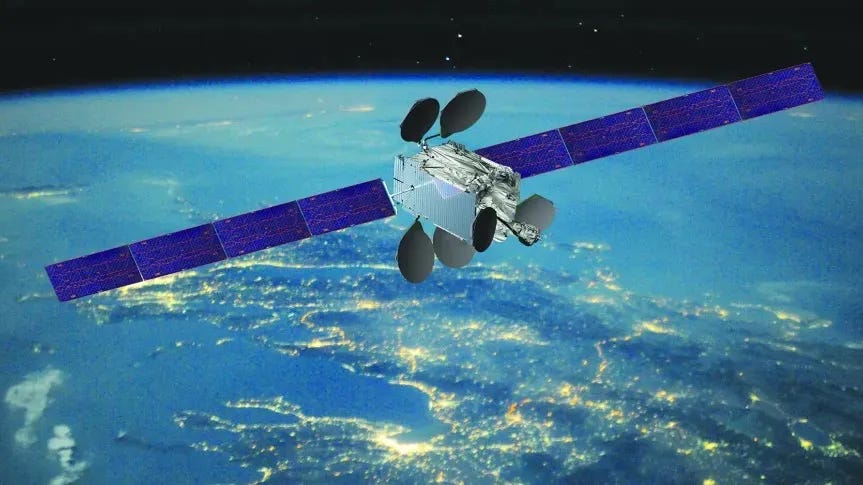Tracking Invisible Debris at 36,000 Kilometers
The Tiny Fragments That Threaten Billion-Dollar Satellites
The geosynchronous orbit could become a graveyard without a janitor. Unlike LEO, where atmospheric drag eventually pulls debris down, space junk at 36,000 km just hangs around, circling the planet forever. A new study led by James Blake and other researchers revisits an ambitious 2018 survey with the Isaac Newton Telescope, sharpening the methods used to track faint pieces of space debris. The team’s upgrades in astrometry and detection revealed more small fragments than previously known, objects as tiny as 10 centimeters, many spinning wildly.
By refining star trail centroiding and feeding results into Gaia’s state-of-the-art catalog, the researchers pushed positional accuracy to sub-arcsecond levels. They also deployed “blind stacking,” a technique that aligns and combines multiple exposures to drag faint signals out of the noise. That technique alone pulled in 15 new detections the original pipeline missed. The picture that emerges is unsettling: the faint debris population is more numerous and more dynamic than catalogues admit, with brightness variations hinting at fragments tumbling unpredictably.
Follow-up observations expanded the hunt beyond the Canary Islands to Australia and Japan, leveraging SkyMapper, Bisei’s one-meter telescope, and Warwick’s twin astrographs. These instruments showed that even with smaller apertures, clever strategies and collaborative coverage can still push deeper into the faint debris regime. Early results suggest the familiar bimodal brightness curve (bright satellites and faint debris) persists, but with subtler nuances that only multinational campaigns can tease out.
What stands out is the growing sophistication of space debris surveillance. CMOS detectors with negligible readout times, stacking pipelines designed for moving targets, and even neuromorphic “event-based” sensors inspired by biological eyes are now part of the toolkit. This new arsenal suggests a future where ground-based monitoring could keep up with fragmenting satellites and at the same time anticipate potential issues. For operators planning billion-dollar missions to geosynchronous orbit, this reasearch will be essential to ensure the longevity of their satellites.
The team’s improvements expose how crowded and unstable GEO is becoming. Breakups like Intelsat 33E’s in 2024 will continue to seed the belt with debris for which we don’t have the means to sweep away. And while private ventures pitch servicing and recycling missions, the reality is that faint debris is multiplying faster than it can be managed.
In other news
The European Space Agency has signed a €40 million, two-year deal with Italian aerospace firm Avio to design and test a reusable upper-stage demonstrator. - Space.com
In other funding news, the UK Space Agency has awarded £150,000 to fund a six-month preliminary design review of a new “economical transfer vehicle” (ETV) built around autophage propulsion technology, a concept where the spacecraft consumes its own structural material as fuel to reduce dry mass. - Payload
Chinese astronauts conducted a roughly six-hour spacewalk outside the Tiangong station, during which two crew members installed new debris-shielding modules to protect the outpost from orbital micrometeoroids and fragmentation debris. - Space.com
The U.S. Space Force will require its next-gen “neighborhood watch” satellites to be refuelable in orbit, to help extend satellite lifespans and boost flexibility, though questions remain over fuel standards and service models. - Breaking Defense
Interesting Posts
Jessica West argues that the romantic notion of space as a benign domain for science and cooperation is outdated. The era of the Outer Space Treaty and its taboo on orbital weapons has given way to intensifying competition, militarization, and ambiguity over what constitutes a permitted act.
In a recent LinkedIn post, Davide Conte reminds us that collision avoidance maneuvers (CAMs) in LEO shouldn’t be treated as last-minute emergency actions but as planned maintenance. Maneuver windows are narrow, and waiting too long can waste propellant, shorten satellite lifetimes, or even result in failed avoidances.
Conferences & Webinars
Space Debris Hackathon - 08-10 October 2025, Alfred-Wegener-Institute, Potsdam, Germany
The 7th Summit for Space Sustainability - October 22-23, 2025
Centre de Conférences Pierre Mendès France, Paris
Thanks for reading.
Until next time!


